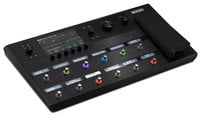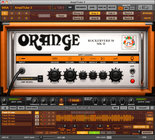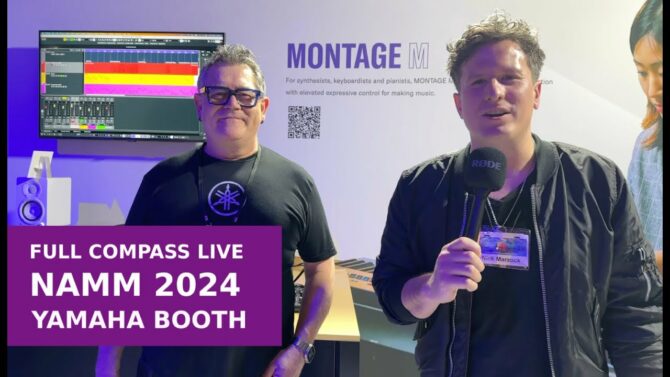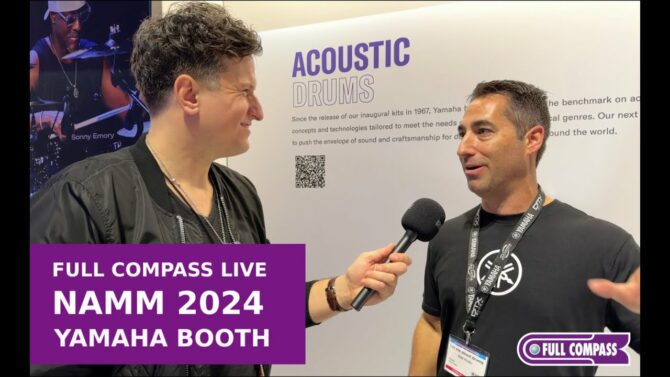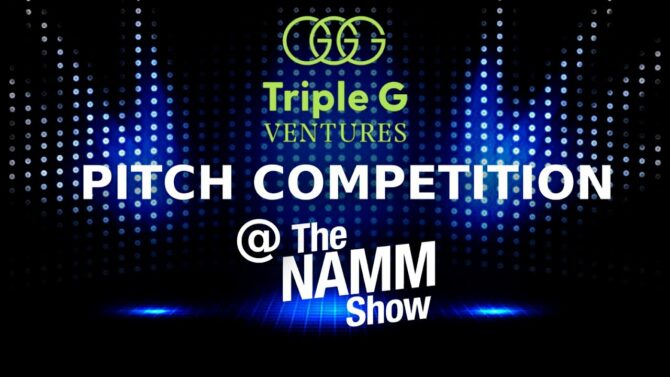Software emulations of guitar amps have been with us for over two decades, and out of the starting gate, they acquired a reputation of “not as good as the real thing.” And frankly, that’s not surprising. Computers had nowhere near the power they have now, and software algorithms were less developed. Methods of quantifying amp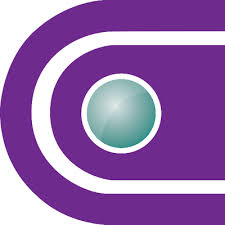 Definition:
Definition:
Abbreviation for either Ampere or Amplifier. performance were not as sophisticated, and using convolution to create more realistic speaker cabinets was a non-starter—the first convolution-based plug-in Definition:
Definition:
A software module, typically for signal processing or analysis, that inserts into the signal path of a DAW or video editor, or in some digital consoles. Also Plugin. (Altiverb from Audio Ease) wouldn’t be introduced until years later.
Over the past two decades, there have been numerous, ongoing incremental improvements to the art and science of amp simulation. Even long-running software programs like IK Multimedia’s AmpliTube and Native Instruments’ Guitar Rig have not rested on their laurels, and made dramatic improvements.
So are we there yet? It depends…
Amp Sim Vs. Physical Amp
When most people think of a guitar amp, they think of a large, heavy box with big speakers that move lots of air in a room—and are loud! Playing guitar through an amp is a visceral experience, and playing in a physical space has a lot to do with that. Running an amp sim Definition:
Definition:
A software program that emulates the sound of guitar amplifiers. in recording software, and playing back the results over near-field monitors, doesn’t replicate that experience.
However, recorded sounds are a different matter. With today’s amp sims, few people can tell definitively whether a track was recorded with an amp sim or a miked, physical amp—funneling the physical amp’s sound through studio monitors levels the playing field to a great degree.
What’s more, no law says you must use only amp sims or hardware amps. Some guitarists play through amp sims feeding feeding speaker cabinets or PA Definition:
Definition:
(Public Address) A sound system intended to provide audio coverage to large groups of people. systems, or even treat “personal PAs” (such as the QSC K12.2 Active Loudspeaker, Yamaha's DZR Series, the PreSonus StudioLive Active Integration series, portable Line Array Definition:
Definition:
A vertical array of identical speakers that can have control over vertical dispersion models from Bose, and excellent options from Line 6, JBL and Electro-Voice) as an amp sim’s amplification system.
Of course, you’ll always have the amp sim haters who insist only a physical amp is worth playing through. But you’ll also find professional musicians who fill stadiums and use amp sims, especially units like the Kemper Profiler (Fig. 1) and Line 6 Helix (Fig. 2) that don’t require a computer.


I have both amps and amp sims, and in my experience, the amp sims can actually sound better—but only if you make the effort to tweak Definition:
Definition:
1. To make minor adjustments. 2. A person who is a perfectionist. and shape the sounds. And I’m not alone; I recently visited a well-known, heavy metal producer, with rows and rows of platinum albums to back up his ears. He’s selling most of his amps because he found the Kemper did everything he wanted.
Advantages and Disadvantages of Amp Sims
Regardless, there are both advantages and disadvantages to amp sims that few would dispute. Let’s look at the main advantages first.
- Play at any volume. Amp sims can produce the sound of cranked amps at low volumes. If you’re playing in a House of Worship, you can’t crank an amp up to 11 without driving the congregation out of the building. The same is also true of venues like restaurants and smaller clubs. And for home studios, amp sims keep the peace with neighbors (and significant others).
- They’re cost effective. A software amp sim delivers the sound of amps, cabinets, and effects at a fraction of the cost of the real thing—even if you take into account the cost of the computer needed to run an amp sim, or the cost of a hardware modeling unit.
- Create sounds that would be difficult, if not impossible, to create with physical amps. One of my favorite guitar sounds is multiband distortion
 Definition:
Definition:
A change in an electronic or acoustic signal's waveform. This can undesirable if it impacts signal quality, or desirable when used for creative signal processing., which splits the guitar into four frequency Definition:
Definition:
A value, expressed in Hertz, that indicates how many cycles of a periodic signal occur in one second. bands and distorts each band Definition:
Definition:
A grouped range of frequencies, usually with a commonly used designation. through its own amp and cabinet. This produces a more focused, defined sound and while you could do this in hardware, it would be expensive—as well as difficult and time-consuming to set up (let alone tweak, mic, and record). - Being able to save presets is wonderful. Unlike a pedalboard where you need to patch units together and adjust knobs, when you get a sound you like with amp sims, just save it as a preset
 Definition:
Definition:
1. (verb) Ability to set parameters in advance, and recall those parameter values as desired. 2. (noun) A collection of parameter values stored within a device, or externally. so it will be ready to go whenever you are. - Virtual tubes don’t wear out or require replacing. You also can’t blow up virtual speaker cones or drop the virtual mics that mic the virtual speaker cabinets.
Now consider some disadvantages.
- Roadworthy, hardware units like the Kemper Profiler and Line 6 Helix aren’t cheap. These cost $1,800 and $1,600 respectively, although to be fair, you get a lot in return.
- Software amp sims require a computer. As soon as a computer gets involved, you have to stay on top of operating system updates, minimize latency
 Definition:
Definition:
The amount of delay a signal, data, sound, video, or control signal acquires within a device, system, or long-distance connection., and of course, pay for a computer and audio interface Definition:
Definition:
A device to convert audio signals into digital code suitable for use by a computer; typically communication occurs through a port such as USB, Thunderbolt, FireWire, etc. . Fortunately today’s laptops are up to the task, but for live Definition:
Definition:
Live broadcast of an event or program without substantial delay or editing. performance, you need to treat your computer with far more care than a physical guitar amp. - There’s a learning curve. Presets can help, but with software amp sims, those presets probably weren’t created by someone using the same guitar, playing style, pick, and who’s fan of the same musical genres as you. Sometimes a tiny EQ tweak, or pulling back on a virtual amp’s drive control, can transform a so-so sound into a great sound—but you have to know which knob to tweak.
Software Amp Sims: What Are Your Options?
Your first option is free plug-ins. Yes, free! Because amp sims have been controversial, most companies are happy to let you try before you buy.
Although amp sims are included in bundles from companies like Waves and Native Instruments, let’s look at some amp sim-only products.
IK Multimedia released the first native amp sim plug-in, and now their AmpliTube amp sim is up to Version 4. Several versions are available, including AmpliTube Free, which really is free and also, useful (you can add modules via IK’s online “Custom Shop”). If you like what you hear, you can move up to various relatively inexpensive packages, like AmpliTube Orange which includes 8 Orange amp models and 9 speaker cabinets for $100, or the AmpliTube Fender 2 Collection of 7 well-known Fender amps for $130. The top-of-the-line version, AmpliTube MAX (Fig. 3), costs around $300 and offers 80 amplifiers (guitar and bass), 88 stompbox models, 92 cabinets, 29 speaker models, 19 mics, and 24 rack Definition:
Definition:
A frame for holding gear that meets an industry standard for enclosures. This specifies a 19 inch width, and a height that is some multiple of 1.75 inches. A rack frame can be open or enclosed, and has rails drilled with standardized screw holes for attaching rack equipment. effects.

Of course, IK isn’t the only game in town. Overloud’s TH3 plug-in (Fig. 4) is $250 and has 72 amps (guitar and bass), 37 cabinets, 75 pedals and rack effects, and 18 mic models.

Magix has unbundled their Vandal plug-in from Samplitude; it takes a somewhat different approach because instead of emulating a particular analog Definition:
Definition:
A signal that is continuous in nature, as opposed to being defined as a series of discrete numbers (or elements) as found in digital signals; electrically "analogous" to an acoustical signal in the air. amp, it creates an amp system from scratch, with effects and cabs as well as amp parameters.
Softube’s Amp Room Bundle (Fig. 5) collects three of their amp rooms into a single bundle.

Softube is also the company behind several of the à la carte amp simulations for Universal Audio’s powered plug-ins, as used with their interfaces and DSP Definition:
Definition:
1. DSP (Digital Signal Processor): An integrated circuit or device that mathematically alters sound or video signals. 2. DSP (Digital Signal Processing): The technique of converting an analog signal into digital data, manipulating that data, then producing an analog output that reflects the changes caused by these manipulations done in the digital domain. cards.
A relative newcomer, Positive Grid, has been getting a lot of attention for their BIAS Amp Pro (Fig. 6) amp simulation software ($184) and BIAS FX Pro ($159), which comes with 32 amps, 52 stompboxes and 10 studio rack processors.

Interestingly, BIAS Amp Pro has a feature, AMP Match, that can create simulations of amps (somewhat like Kemper’s profiling). I’ve used it to capture Definition:
Definition:
To acquire audio and/or video, and convert it to a file. amp sounds that were “locked” to Cakewalk Sonar and are no longer available, thus preserving them for other projects in other DAWs. The emulation Definition:
Definition:
To imitate the characteristics of something else. Example: Running a Windows emulation on a non-Windows computer would allow it to run Windows software, although perhaps with a performance penalty. is almost perfect.
These are just a representative sampling—space precludes mentioning everything that’s out there, but it’s clear that amp sim software is gaining popularity as the quality improves, and prejudices based on earlier generations of sims start to dissipate.
If Nothing Else…
Even many diehard tube Definition:
Definition:
(slang) A vacuum tube or (valve), an electronic amplifying or rectifying element with a heating filament, in a glass or metal envelope. amp fans have discovered that amp sims add a valuable tool to the guitarist’s toolbox, and can produce tones physical amps just can’t produce. Just as very few guitar players have only one guitar, there’s no reason to limit yourself to only one type of amplification.
SIDEBAR: Happy Birthday, Jimi!
Jimi Hendrix, considered by many as one of the most influential guitarists ever, was born on November 27, 1942. With his trademark Strat, Marshall amp, and wah pedal, the core of Hendrix’s sound was his fingers and soul—not some technological gimmick (although in the studio, he certainly took full advantage of the technology of that time).
But in a twist of technology re-visiting the Hendrix sound decades later, IK Multimedia has created a specialized, Hendrix-specific package, AmpliTube Jimi Hendrix (Fig. 7). Developed in collaboration with the Hendrix estate, the package includes emulations of the amps, cabs, effects, and mics Jimi used. It even has presets for specific songs that call up the appropriate rig.
If he was alive today, would Hendrix be using amp sims? Having had the good fortune to watch him in the studio during the making of “Electric Ladyland,” I’m pretty sure that at least when recording, he would have been open to anything that could expand his sonic possibilities. Of course, using AmpliTube Jimi Hendrix doesn’t mean you’ll be able to play like Jimi—but it can help you sound like him.









